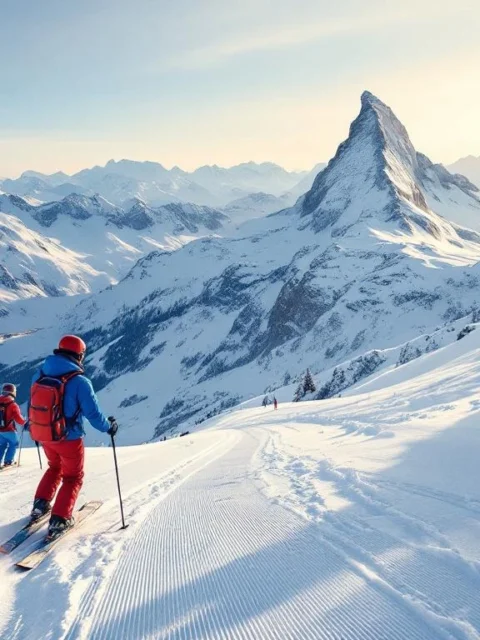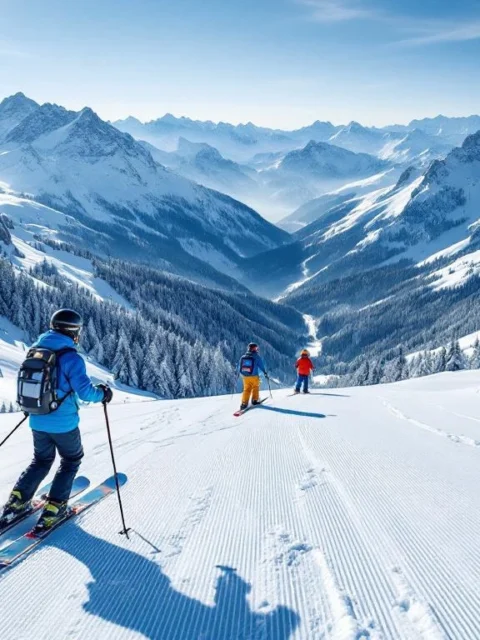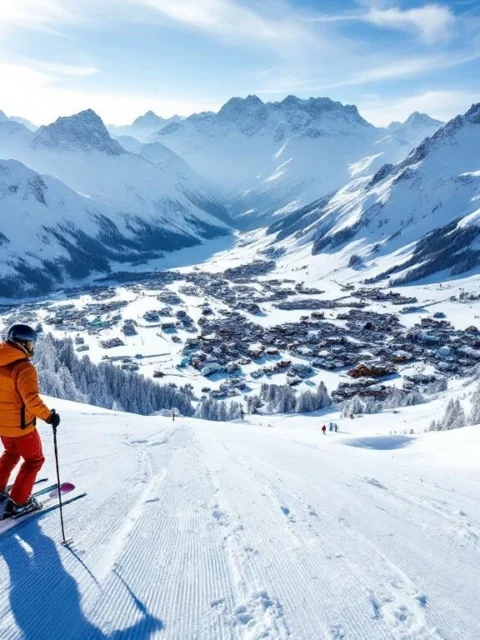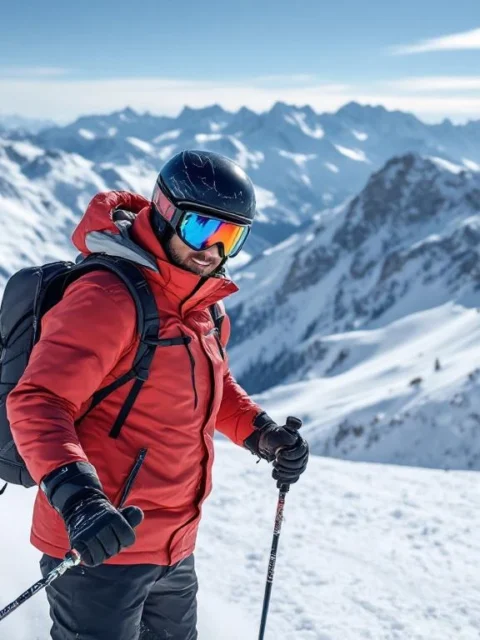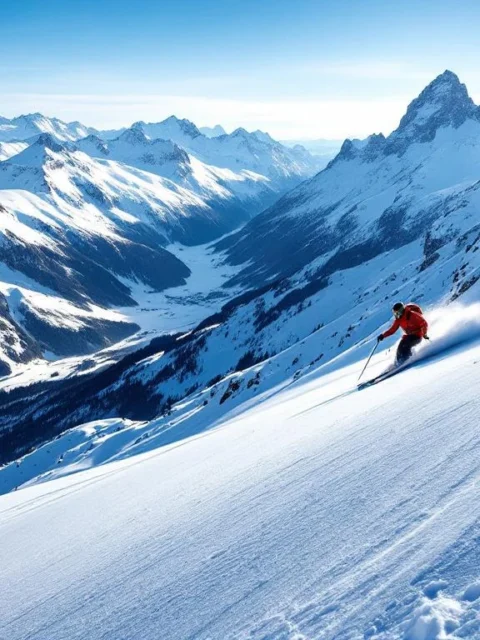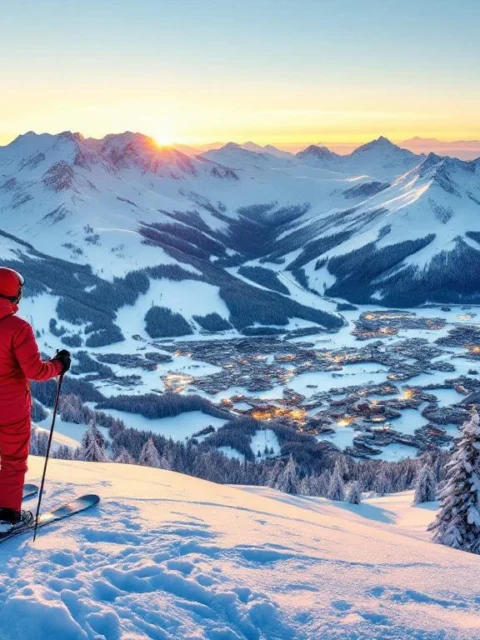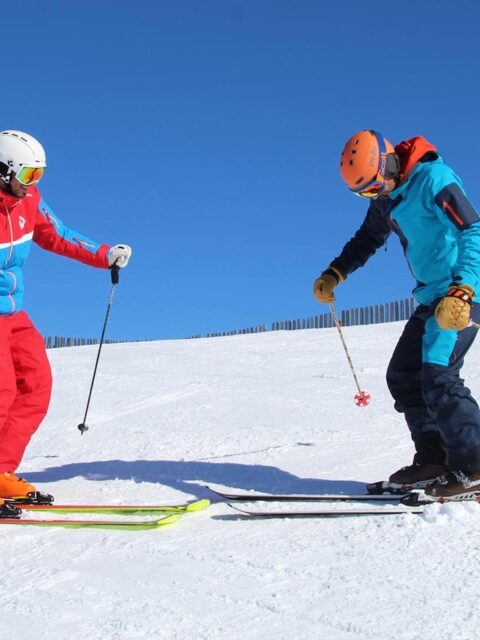At what age can children learn to ski?
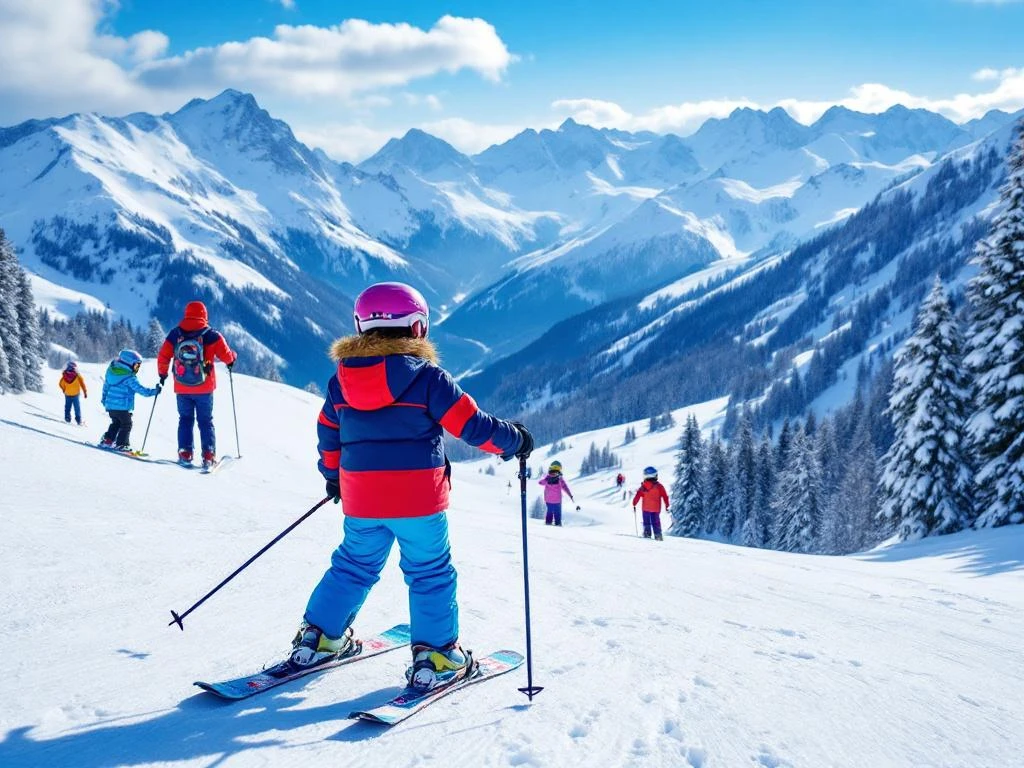
Children can often learn to ski earlier than many parents think! Most children are ready to learn the basics of skiing between 3 and 5 years old, although this varies by child. Toddlers from age 3 can already playfully get acquainted with snow and simple gliding movements, while children from age 6 can develop real technical skills. The most important factor isn’t so much the exact age, but whether your child is mentally and physically ready. Watch for signs of interest, balance, and motor coordination.
At What Age Can Children Safely Start Skiing?
Children can generally safely begin skiing between 3 and 5 years old, though this strongly depends on their individual development. At this age, most children have developed sufficient balance and motor skills to learn the basics. Their bodies are flexible and they have a low center of gravity, which helps with making their first gliding movements.
For the youngest skiers (3-5 years), it’s primarily about playfully getting acquainted with snow and skis. At this age, children learn:
- Getting familiar with ski equipment
- Gliding in a straight line on flat terrain
- Braking in a pizza shape (snowplough)
- Simple balance and gliding games on the snow
Children aged 6-8 can develop more technical skills. Their muscles are stronger, their concentration span is longer, and they understand instructions better. At this age, they can learn:
- Making turns in the pizza position
- Using drag lifts
- Descending simple blue slopes
- Adopting basic skiing posture
From age 9 onwards, children often make rapid progress. Their bodies are stronger, they have more control over their movements, and can follow more complex instructions. At this age, they can:
- Learn to make parallel turns
- Control different speeds
- Descend more challenging slopes
- Learn the finer points of ski technique
The most important thing is to never force your child. Some children are completely ready for their first ski experience at age 3, while others only develop the necessary interest and skills around 5-6 years. Listen to your child and observe their reactions to snow and cold. A professional ski instructor can also assess well whether your child is ready.
What Are the Benefits of Learning to Ski Early for Children?
Learning to ski early offers children numerous benefits for their physical and mental development. Young children pick up new motor skills incredibly quickly and often have less fear than when they start at a later age. Their bodies are flexible and their lower center of gravity makes maintaining balance easier, allowing them to learn basic techniques often through play.
Physically, skiing helps children develop:
- Balance and coordination – Skiing requires constant adjustments in posture and weight distribution
- Muscle strength in legs and core – Especially important for growing bodies
- Spatial awareness – Children learn to assess their position while in motion
- Motor skills – The combination of different movements stimulates brain development
Besides the physical benefits, there are also important mental and social advantages:
- Self-confidence – Overcoming challenges on the slopes boosts self-image
- Perseverance – Children learn that practice pays off when they make progress
- Dealing with fear – They learn to take healthy risks in a controlled environment
- Social skills – Group lessons offer opportunities to make friendships with other young skiers
An additional benefit is that young children often have a natural aptitude for learning new skills. Their brains are still developing, which facilitates learning movement patterns. Children who learn to ski young often build a solid technical foundation that benefits them later when exploring more challenging slopes.
Don’t forget that fun is the most important thing! When children experience skiing as something enjoyable, they’re motivated to keep practicing and improving. A playful approach with plenty of positive reinforcement ensures they develop a lifelong love for the sport.
How Do You Recognize That Your Child Is Ready to Learn Skiing?
Your child is ready to learn skiing when they are sufficiently developed both physically and mentally for this new challenge. Look for signals such as good balance, basic coordination, interest in snow and movement, and the ability to follow simple instructions. Calendar age is less important than these individual indicators of ski readiness.
Physical signs that your child is ready to learn skiing:
- Balance and stability – Your child can stand on one leg for at least 5-10 seconds
- Sufficient leg strength – They can squat and stand up again effortlessly
- Good coordination – They can run, jump, and combine different movements
- Endurance – They have enough energy for at least an hour of physical activity
Mental and emotional indicators to watch for:
- Showing interest – They ask questions about skiing or respond enthusiastically to the idea
- Listening skills – They can follow simple, two-step instructions
- Independence – They dare to be without direct parental supervision for short periods
- Handling frustration – They don’t give up immediately when facing new challenges
- Positive attitude toward snow and cold – They enjoy winter conditions
Also pay attention to practical matters that can influence learning to ski:
- Toilet training – This makes ski instruction much more practical, especially for group lessons
- Comfort with strangers – They feel at ease with other adults such as instructors
- Ability to function in a group – They can wait their turn and share
Trust your parental intuition. If you’re unsure whether your child is ready, consider a trial lesson or an introductory session. Many ski schools offer special programs for very young beginners, where they can discover in a safe environment if skiing is for them. The most important thing is that the first ski experience is positive, so your child remains enthusiastic about the sport.
What Ski Equipment Do Beginning Children Need?
Beginning children need specific ski equipment that fits their age, height, and skill level. The essential items are child-friendly skis (often shorter and more flexible), fitting ski boots, adjustable ski poles (though these aren’t necessary for the very youngest), a well-fitting helmet, and protective, waterproof clothing. The right equipment significantly increases comfort and safety.
For skis and bindings:
- Length of the skis – For beginners, the ideal length is between chin and nose height, which promotes stability and control
- Flexibility – Choose soft, bendable skis that turn more easily for young skiers
- Child-friendly bindings – These should be properly adjustable to your child’s weight
- Second-hand option – For rapidly growing children, renting or buying second-hand is often more sensible
For ski boots, comfort is crucial:
- Good fit – Not too tight and not too loose, with room for warm socks
- Simple closure system – With easy-to-operate buckles or velcro closures
- Flexibility – Softer, more flexible boots make the learning process easier
- Heat insulation – Well-insulated boots keep little feet warm
For safety and protection:
- Helmet – Absolutely necessary! Choose a model specifically for skiing/snowboarding with a good fit
- Ski goggles – Protect against wind, cold, and glare from the snow
- Back protector – Optional but recommended for extra protection
- Gloves – Waterproof, well-insulated, and with long cuffs
For clothing, you need the following:
- Thermal underwear – Retains body heat and wicks away sweat
- Middle layer – A fleece or softshell for extra insulation
- Waterproof ski jacket and pants – Preferably with snow catchers and room to grow
- Ski socks – Specific socks that retain heat without being too thick
- Neck warmer or balaclava – Protection for neck and face in cold weather
Consider renting equipment before investing in a purchase, especially for rapidly growing children. Many ski schools and rental locations offer special children’s packages with all necessary equipment. This gives you the chance to see if your child enjoys skiing before making major expenses.
Finally, it’s a good idea to place name stickers on all equipment, especially for group lessons where materials can easily get mixed up. And don’t forget to bring a small backpack with water, snacks, sunscreen, and possibly spare gloves!
Conclusion
The right time to introduce your child to skiing varies per child, but most children are ready for their first ski experiences somewhere between 3 and 6 years old. Pay attention to the signals your child gives – physical skills such as balance and coordination are more important than the exact age. Start playfully, ensure the right equipment, and above all, make it an enjoyable experience.
Learning to ski early offers children not only a fun winter activity but also helps them develop important motor skills, self-confidence, and perseverance. Listen to your child’s needs and adjust the pace – some children want to go down the entire mountain right away, while others need more time to become comfortable with the snow.
At Ski-Pro, as passionate winter sports enthusiasts, we understand how special it is to see your child grow up with the same love for the mountains. We’re happy to help you find the perfect ski school or instructor that matches your child’s age and level. Our partners specialize in child-friendly ski instruction where fun and safety come first. This way, you make your child’s first ski experience unforgettable and lay the foundation for many years of skiing enjoyment!
Frequently Asked Questions
How do I find a good ski school or ski instructor for my child?
Look for ski schools with specific children's programs and instructors who specialize in teaching young children. A good children's ski instructor uses playful learning methods, has patience, and makes lessons fun. Ask about group sizes (smaller groups are better for beginners), check online reviews, and inquire whether the ski school has a safe, enclosed practice area. Many good ski schools also offer trial or introductory lessons so you can see if your child enjoys it.
What are the most common mistakes parents make when teaching their children to ski?
The biggest mistake is taking children to slopes that are too difficult too soon, causing them to become anxious or frustrated. Parents also often try to teach themselves without the proper teaching skills, or they have expectations that are too high regarding learning speed. Other common mistakes include: not taking enough breaks, skiing in temperatures that are too cold, forgetting that it should primarily be about fun, and not choosing the right equipment. Professional lessons are almost always more effective than parental instruction, especially in the beginning.
What should I do if my child is afraid to ski or shows resistance?
Never force your child. Start with small, playful steps such as getting used to the equipment indoors or simply playing in the snow. Private lessons can help with anxious children, as instructors have experience in building confidence. Use positive reinforcement and reward every small bit of progress. Sometimes it helps to show other children having fun on skis. If your child really doesn't want to, give them time and perhaps try again a season later - timing is crucial.
How long does it take before children can ski independently?
This varies greatly by child, but most children can independently descend simple blue slopes after 3-5 days of lessons. Young children (3-5 years) often need a week to master the basic skills, while children from age 6 can sometimes ski on a simple blue slope with guidance after just 2-3 days. Consistency is important - daily lessons during a ski vacation lead to faster progression than scattered ski days. The key is to be patient and let each child learn at their own pace.
Can we ski as a family while the children are still learning?
Certainly, but plan strategically. Start with separate lessons for the children in the morning and ski together in the afternoon on slopes that match their level. Create a 'family plan' alternating between challenging slopes for advanced skiers and simple slopes where everyone can ski together. Consider taking an occasional family ski lesson, where an instructor guides you and provides tips for skiing as a family. Also think about resorts with good facilities for families, such as children's slopes and moving carpets.
Is skiing or snowboarding better for young children to start with?
Skiing is generally the better choice for young beginners (3-7 years). It's more intuitive because the movement resembles walking, and children can learn the basics more quickly. Balance is easier to maintain on two skis, and they can use the lifts independently earlier. Snowboarding requires more abstract movements and core strength, which is more challenging for very young children. Around ages 7-8, children can start snowboarding just fine if they prefer it. The most important thing is to choose what your child seems to enjoy most.
What activities can we do at home to prepare children for skiing?
Activities that develop balance and leg muscles are ideal, such as trampolining, skateboarding, or cycling. Games where children need to squat and stand up again simulate the movements during skiing. You can also 'dry practice' by having them slide on a smooth floor in socks in the skiing position. Playfully practicing lifting one leg helps with balance, and swinging trains the sense of movement. In winter, ice skating or sledding can also help them get used to speed and slippery surfaces.


